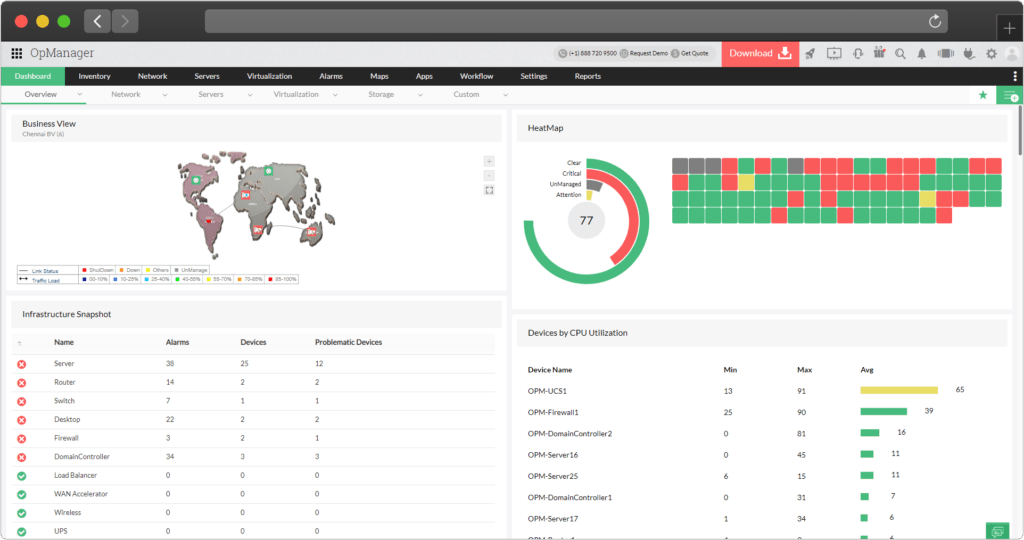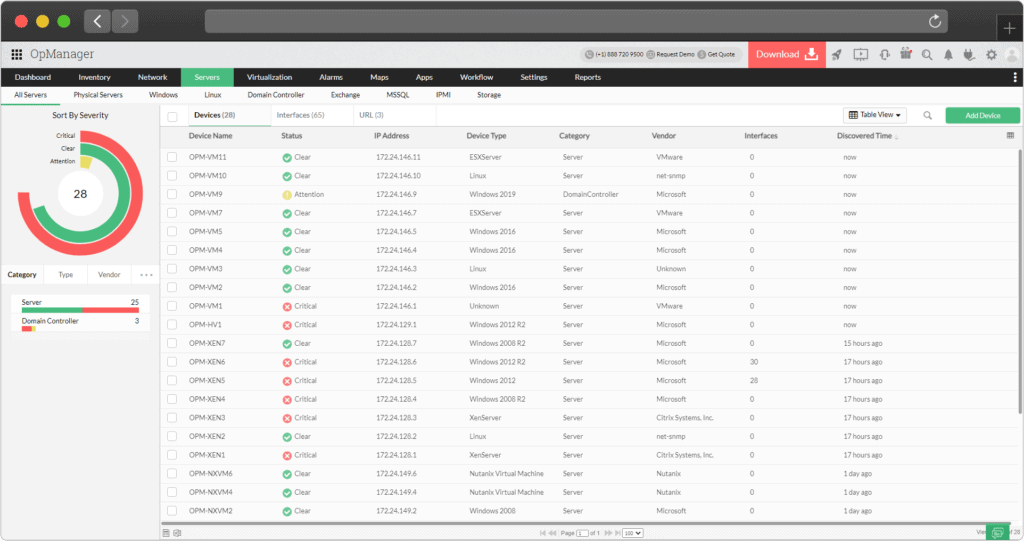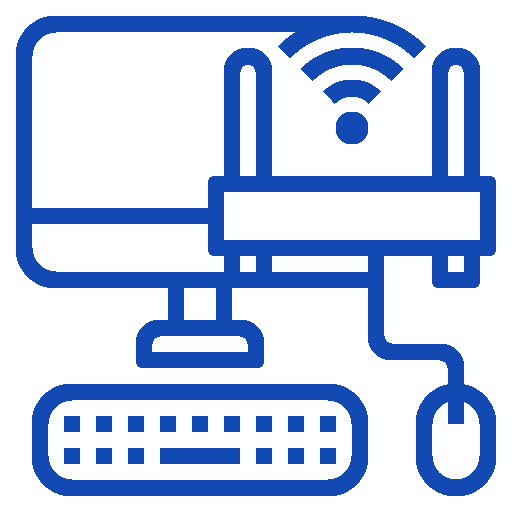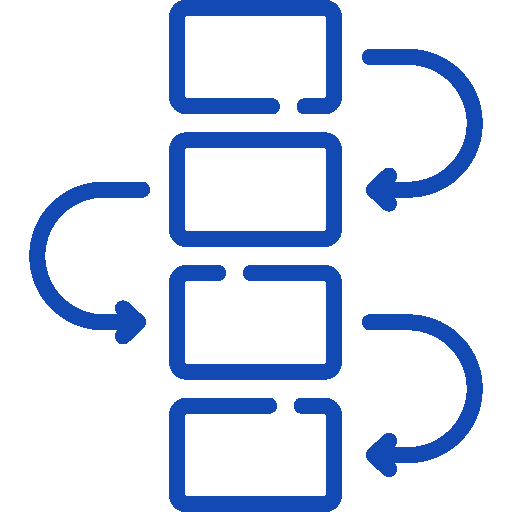
Network monitoring and IT infrastructure monitoring
ManageEngine OpManager is software for network, server and virtualization monitoring . IT administrators can use it to monitor the availability and performance of their network efficiently and cost-effectively - thanks to extensive functions such as flow-based bandwidth analysis, log analyzes for firewalls, configuration, IP address and switch port management.
Automated workflows , intelligent alarms (by email, SMS, trap, syslog, etc.), configurable rules and over 100 preconfigured, expandable templates and reports enable IT to set up a 24/7 monitoring system within a few hours. With OpManager, all important network parameters such as availability, speed and utilization can be continuously monitored . In this way, IT teams can often correct malfunctions before the end users even notice the impairment.
OpManager offers comprehensive fault and performance management for servers, virtual servers, services, Microsoft applications and databases, wireless area networks (WAN), VoIP services, network devices, etc. - all via a single web console. The solution is easy to install and intuitive to use . It is therefore a cost-effective alternative to expensive, large and complex network management systems that are currently available on the market.
OpManager is suitable for small, medium-sized and large companies as well as for IT service providers (managed service providers).
What You Can Expect
OpManager is Capable of
Some Perks
Advantages of ADAudit Plus
Some Feature
A Glance of OpManager
Editions
Available in Three Editions
FAQ's
Frequently Asked Questions
How does OpManager monitor the devices?
OpManager is an agent-less monitoring and management tool that uses a wide variety of protocols and technologies: ICMP, SNMP, WMI, CLI (Telnet/ SSH), TFTP, SCP. OpManager also includes a Syslog demon, SNMP Trap listener and Flow collectors for NetFlow, sFlow etc. All these and more bring together many network performance monitoring and management capabilities within OpManager.
How many devices can I monitor with OpManager?
The OpManager polling engine can monitor up to 10,000 Interfaces. However, this depends on the system hardware, polling frequency and type of devices. The OpManager Enterprise Edition can monitor up to 50,000 interfaces. To know the exact number of interfaces monitored by your OpManager installation, refer to the “edition” page on the product page.
What are the different types of Personality Identifiable Information in OpManager?
- Email ID
- Name
- Phone Number
- Mac Address
- IP Address
What are the supported datatypes for Performance monitors in OpManager?
The following data types are supported for Performance monitors in OpManager:
- Integer
- Decimal
- String
Why is intermediate/root certificate required when I import the certificate?
The intermediate and root certificates are needed to validate the server certificate provided. The server Certificate along with the intermediate and root certificates forms a complete chain, termed as ‘Chain of trust’, which establishes the authenticity of the certificate.
How do I install OPManager Plus
Being the Swiss Partner of ManageEngine, Kidan is responsible for aiding with professional services, such as installing, implementing, configuring, training, and supporting the company to ensure an effective on-boarding of OP Manager Plus.
To make it even better, Kidan even provides advice on top of it all!
Get in touch with us to know more.
Want to continue the conversation?
Thank you for the interest in ManageEngine's OP Manager solutions. Please fill out the form below to ask a question or request assistance.
Features OpManager
Clear Network Monitoring
Cross-Platform Server Monitoring
Network Traffic Analysis
Network Configuration Management
Switch Port & IP Address Management
Fault & Performance Management
Data Center Management
Easy Installation
Expand, Adapt & Integrate IT Management Software
FAQ's
Frequently Asked Questions
How does OpManager monitor the devices?
OpManager is an agent-less monitoring and management tool that uses a wide variety of protocols and technologies: ICMP, SNMP, WMI, CLI (Telnet/ SSH), TFTP, SCP. OpManager also includes a Syslog demon, SNMP Trap listener and Flow collectors for NetFlow, sFlow etc. All these and more bring together many network performance monitoring and management capabilities within OpManager.
How many devices can I monitor with OpManager?
The OpManager polling engine can monitor up to 10,000 Interfaces. However, this depends on the system hardware, polling frequency and type of devices. The OpManager Enterprise Edition can monitor up to 50,000 interfaces. To know the exact number of interfaces monitored by your OpManager installation, refer to the “edition” page on the product page.
What are the different types of Personality Identifiable Information in OpManager?
- Email ID
- Name
- Phone Number
- Mac Address
- IP Address
What are the supported datatypes for Performance monitors in OpManager?
The following data types are supported for Performance monitors in OpManager:
- Integer
- Decimal
- String
Why is intermediate/root certificate required when I import the certificate?
The intermediate and root certificates are needed to validate the server certificate provided. The server Certificate along with the intermediate and root certificates forms a complete chain, termed as ‘Chain of trust’, which establishes the authenticity of the certificate.
How do I install OPManager Plus
Being the Swiss Partner of ManageEngine, Kidan is responsible for aiding with professional services, such as installing, implementing, configuring, training, and supporting the company to ensure an effective on-boarding of OP Manager Plus.
To make it even better, Kidan even provides advice on top of it all!
Get in touch with us to know more.
Want to continue the conversation?
Thank you for the interest in ManageEngine's OP Manager solutions. Please fill out the form below to ask a question or request assistance.
Available Editions of OpManager
FAQ's
Frequently Asked Questions
How does OpManager monitor the devices?
OpManager is an agent-less monitoring and management tool that uses a wide variety of protocols and technologies: ICMP, SNMP, WMI, CLI (Telnet/ SSH), TFTP, SCP. OpManager also includes a Syslog demon, SNMP Trap listener and Flow collectors for NetFlow, sFlow etc. All these and more bring together many network performance monitoring and management capabilities within OpManager.
How many devices can I monitor with OpManager?
The OpManager polling engine can monitor up to 10,000 Interfaces. However, this depends on the system hardware, polling frequency and type of devices. The OpManager Enterprise Edition can monitor up to 50,000 interfaces. To know the exact number of interfaces monitored by your OpManager installation, refer to the “edition” page on the product page.
What are the different types of Personality Identifiable Information in OpManager?
- Email ID
- Name
- Phone Number
- Mac Address
- IP Address
What are the supported datatypes for Performance monitors in OpManager?
The following data types are supported for Performance monitors in OpManager:
- Integer
- Decimal
- String
Why is intermediate/root certificate required when I import the certificate?
The intermediate and root certificates are needed to validate the server certificate provided. The server Certificate along with the intermediate and root certificates forms a complete chain, termed as ‘Chain of trust’, which establishes the authenticity of the certificate.
How do I install OPManager Plus
Being the Swiss Partner of ManageEngine, Kidan is responsible for aiding with professional services, such as installing, implementing, configuring, training, and supporting the company to ensure an effective on-boarding of OP Manager Plus.
To make it even better, Kidan even provides advice on top of it all!
Get in touch with us to know more.
Want to continue the conversation?
Thank you for the interest in ManageEngine's OP Manager solutions. Please fill out the form below to ask a question or request assistance.
OpManager Standard Edition
OpManager Professional Edition
OpManager Enterprise Edition
OpManager Add-ons (no download required)
Access Point Monitoring Add-On (Wireless controller based)
URL Monitoring Add-On
OpManager Additional User Pack
NFA Add-On for OpManager
NCM Add-On for OpManager
Firewall Add-On for OpManager
IPAM & SPM Add-On for OpManager
Storage Monitoring Add-on for OpManager
APM Plugin
FAQ's
Frequently Asked Questions
How does OpManager monitor the devices?
OpManager is an agent-less monitoring and management tool that uses a wide variety of protocols and technologies: ICMP, SNMP, WMI, CLI (Telnet/ SSH), TFTP, SCP. OpManager also includes a Syslog demon, SNMP Trap listener and Flow collectors for NetFlow, sFlow etc. All these and more bring together many network performance monitoring and management capabilities within OpManager.
How many devices can I monitor with OpManager?
The OpManager polling engine can monitor up to 10,000 Interfaces. However, this depends on the system hardware, polling frequency and type of devices. The OpManager Enterprise Edition can monitor up to 50,000 interfaces. To know the exact number of interfaces monitored by your OpManager installation, refer to the “edition” page on the product page.
What are the different types of Personality Identifiable Information in OpManager?
- Email ID
- Name
- Phone Number
- Mac Address
- IP Address
What are the supported datatypes for Performance monitors in OpManager?
The following data types are supported for Performance monitors in OpManager:
- Integer
- Decimal
- String
Why is intermediate/root certificate required when I import the certificate?
The intermediate and root certificates are needed to validate the server certificate provided. The server Certificate along with the intermediate and root certificates forms a complete chain, termed as ‘Chain of trust’, which establishes the authenticity of the certificate.
How do I install OPManager Plus
Being the Swiss Partner of ManageEngine, Kidan is responsible for aiding with professional services, such as installing, implementing, configuring, training, and supporting the company to ensure an effective on-boarding of OP Manager Plus.
To make it even better, Kidan even provides advice on top of it all!
Get in touch with us to know more.
Want to continue the conversation?
Thank you for the interest in ManageEngine's OP Manager solutions. Please fill out the form below to ask a question or request assistance.

FAQ's
Frequently Asked Questions
How does OpManager monitor the devices?
OpManager is an agent-less monitoring and management tool that uses a wide variety of protocols and technologies: ICMP, SNMP, WMI, CLI (Telnet/ SSH), TFTP, SCP. OpManager also includes a Syslog demon, SNMP Trap listener and Flow collectors for NetFlow, sFlow etc. All these and more bring together many network performance monitoring and management capabilities within OpManager.
How many devices can I monitor with OpManager?
The OpManager polling engine can monitor up to 10,000 Interfaces. However, this depends on the system hardware, polling frequency and type of devices. The OpManager Enterprise Edition can monitor up to 50,000 interfaces. To know the exact number of interfaces monitored by your OpManager installation, refer to the “edition” page on the product page.
What are the different types of Personality Identifiable Information in OpManager?
- Email ID
- Name
- Phone Number
- Mac Address
- IP Address
What are the supported datatypes for Performance monitors in OpManager?
The following data types are supported for Performance monitors in OpManager:
- Integer
- Decimal
- String
Why is intermediate/root certificate required when I import the certificate?
The intermediate and root certificates are needed to validate the server certificate provided. The server Certificate along with the intermediate and root certificates forms a complete chain, termed as ‘Chain of trust’, which establishes the authenticity of the certificate.
How do I install OPManager Plus
Being the Swiss Partner of ManageEngine, Kidan is responsible for aiding with professional services, such as installing, implementing, configuring, training, and supporting the company to ensure an effective on-boarding of OP Manager Plus.
To make it even better, Kidan even provides advice on top of it all!
Get in touch with us to know more.
Want to continue the conversation?
Thank you for the interest in ManageEngine's OP Manager solutions. Please fill out the form below to ask a question or request assistance.
OpManager Help Document
FAQ's
Frequently Asked Questions
How does OpManager monitor the devices?
OpManager is an agent-less monitoring and management tool that uses a wide variety of protocols and technologies: ICMP, SNMP, WMI, CLI (Telnet/ SSH), TFTP, SCP. OpManager also includes a Syslog demon, SNMP Trap listener and Flow collectors for NetFlow, sFlow etc. All these and more bring together many network performance monitoring and management capabilities within OpManager.
How many devices can I monitor with OpManager?
The OpManager polling engine can monitor up to 10,000 Interfaces. However, this depends on the system hardware, polling frequency and type of devices. The OpManager Enterprise Edition can monitor up to 50,000 interfaces. To know the exact number of interfaces monitored by your OpManager installation, refer to the “edition” page on the product page.
What are the different types of Personality Identifiable Information in OpManager?
- Email ID
- Name
- Phone Number
- Mac Address
- IP Address
What are the supported datatypes for Performance monitors in OpManager?
The following data types are supported for Performance monitors in OpManager:
- Integer
- Decimal
- String
Why is intermediate/root certificate required when I import the certificate?
The intermediate and root certificates are needed to validate the server certificate provided. The server Certificate along with the intermediate and root certificates forms a complete chain, termed as ‘Chain of trust’, which establishes the authenticity of the certificate.
How do I install OPManager Plus
Being the Swiss Partner of ManageEngine, Kidan is responsible for aiding with professional services, such as installing, implementing, configuring, training, and supporting the company to ensure an effective on-boarding of OP Manager Plus.
To make it even better, Kidan even provides advice on top of it all!
Get in touch with us to know more.
Want to continue the conversation?
Thank you for the interest in ManageEngine's OP Manager solutions. Please fill out the form below to ask a question or request assistance.
Let us Know Your Requirements and Get an Exclusive Offer!
How We May Help You ?
Customer Service & Support
We value and believe in the relationships we have with our customers as they represent the most crucial part of our organization.
Kidan provides customer service and support via email. To contact our support teams, please feel free to send us an email to the below addresses:
A telephone hotline is available to our customers to receive immediate support and advise during business hours and days :
Telephone: +41 58 598 60 40
Business days: Monday – Friday
Business hours: 8:00 AM – 5:00 PM (Swiss time)
We also provide a live chat to ensure you get a quick response. You can reach us through our live chat widget on the bottom right of your screen. The availability of our chat support is:
- Monday – Friday
- 8:00 AM to 5:00 PM Swiss Time
FAQ's
Frequently Asked Questions
How does OpManager monitor the devices?
OpManager is an agent-less monitoring and management tool that uses a wide variety of protocols and technologies: ICMP, SNMP, WMI, CLI (Telnet/ SSH), TFTP, SCP. OpManager also includes a Syslog demon, SNMP Trap listener and Flow collectors for NetFlow, sFlow etc. All these and more bring together many network performance monitoring and management capabilities within OpManager.
How many devices can I monitor with OpManager?
The OpManager polling engine can monitor up to 10,000 Interfaces. However, this depends on the system hardware, polling frequency and type of devices. The OpManager Enterprise Edition can monitor up to 50,000 interfaces. To know the exact number of interfaces monitored by your OpManager installation, refer to the “edition” page on the product page.
What are the different types of Personality Identifiable Information in OpManager?
- Email ID
- Name
- Phone Number
- Mac Address
- IP Address
What are the supported datatypes for Performance monitors in OpManager?
The following data types are supported for Performance monitors in OpManager:
- Integer
- Decimal
- String
Why is intermediate/root certificate required when I import the certificate?
The intermediate and root certificates are needed to validate the server certificate provided. The server Certificate along with the intermediate and root certificates forms a complete chain, termed as ‘Chain of trust’, which establishes the authenticity of the certificate.
How do I install OPManager Plus
Being the Swiss Partner of ManageEngine, Kidan is responsible for aiding with professional services, such as installing, implementing, configuring, training, and supporting the company to ensure an effective on-boarding of OP Manager Plus.
To make it even better, Kidan even provides advice on top of it all!
Get in touch with us to know more.
Want to continue the conversation?
Thank you for the interest in ManageEngine's OP Manager solutions. Please fill out the form below to ask a question or request assistance.





















































